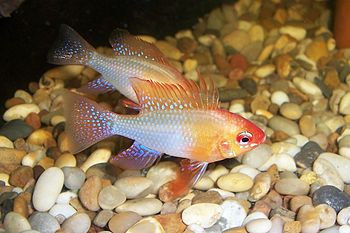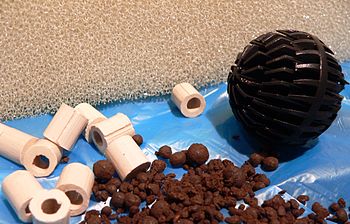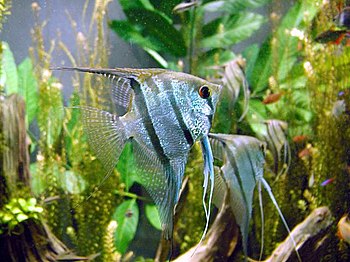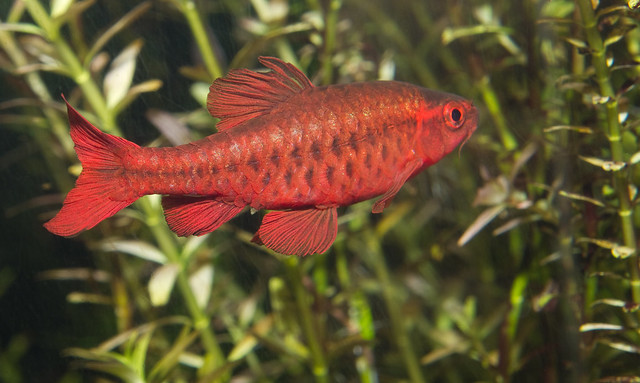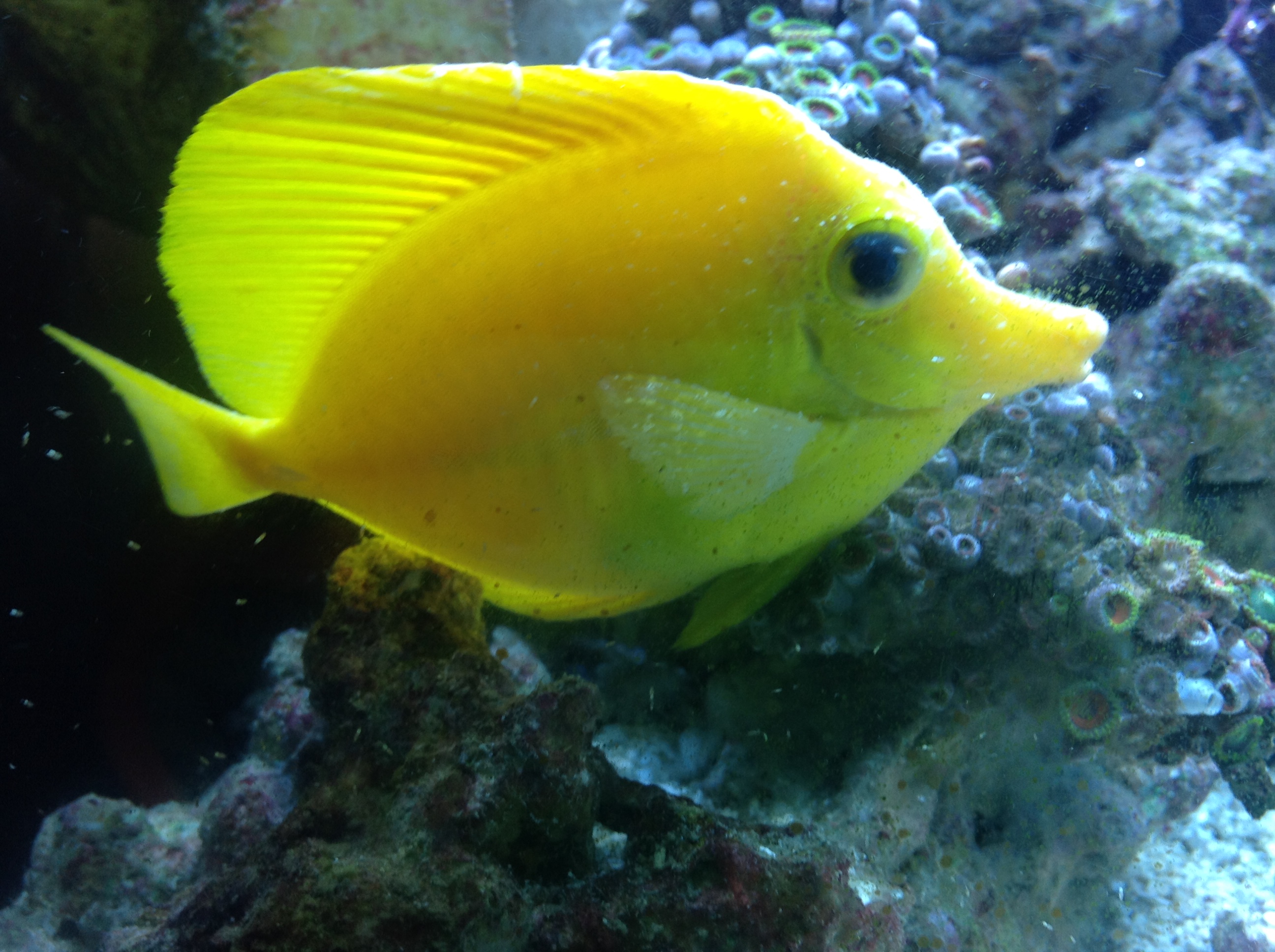 |
| Yellow tang with white spots characteristic of marine ich Wikimedia Commons. |
Saltwater aquarium pests and parasites might have an adverse effect on the health of your marine tank. Bacterial diseases can cause ill-health in your fish and invertebrates. Bacterial disease can also kill the fish in your tank. To get rid of the problem you might have to start all over again from scratch. This is not only very upsetting but also very expensive.
So it makes sense to be on the lookout for saltwater aquarium pests and parasites and to treat your fish at the first sign of illness. Marine fish usually fall prey to gram-negative bacteria. These include Pseudomonas, Vibrio and Myxobacteria. It is not always easy to spot saltwater aquarium pests and parasites in marine fish. Often you may not know that there is something wrong until your fish become seriously ill.
You can help prevent saltwater aquarium pests and parasites by making sure that conditions in your tank don’t encourage their growth. To do this you need to understand how and why saltwater aquarium pests and parasites occur in marine fish in the first place.
The bacterial disease is caused by a number of things, sometimes in combination. Such disease can be topical (external) – for example, fin and tail rot and ulcers or systemic (affecting the body internally) or it might be a combination of both. Saltwater aquarium pests and parasites are more likely to affect fish that are in poor condition. The healthier your fish are the more resistance they will have to saltwater aquarium pests and parasites.
However, fish that are weak, sick or stressed by environmental conditions in the tank are easily infected by saltwater aquarium pests and parasites. Bacterial diseases may gain entry into the body through the pores along the lateral line. The gills are another site of entry into the body of a fish.
So what environmental conditions make it more likely for saltwater aquarium pests and parasites to cause illness in your tank? The leading cause of the bacterial attack is poor environmental conditions in the tank. If conditions are allowed to deteriorate the health of your fish is impacted and this might make them more susceptible to diseases.
Saltwater aquarium pests and parasites will soon bloom and over-run the tank. If the water is white and cloudy and the fish have sores on their body, conditions in the tank are very poor and must be corrected.
Your fish may also be affected by saltwater aquarium pests and parasites if they have other infections. So treating them is crucial. If your fish are not fed properly they might not have built up a good resistance to infection. Any injuries that your fish have might allow bacteria to take hold. Fish that are stressed and harassed are also more likely to become ill.
Older, weaker fish are at increased risk of contracting a bacterial infection as are any fish that come from water that has been contaminated (for example tap water!). If a fish eats the flesh of a sick fish it may also become ill with the same disease. So how do you know if your fish are infected with saltwater aquarium pests and parasites? What should you look for?
If your fish are afflicted with saltwater aquarium pests and parasites they might show one or more of the following symptoms:
- Red frayed fins or fins that show red streaks.
- The fins might disintegrate (in fin and tail rot).
- Red areas around the lateral line (streaks or blotches).
- Open sores on the sides of the body and near the fins.
- Bloody scales at the fin base.
- Fast breathing.
- A grey film may cover the eyes.
- The fish may appear listless or lethargic.
- They may lose their appetite.
- The stomach may be swollen or bloated from saltwater aquarium pests and parasites that cause bladder infections, for example.
Bacteria are not the only saltwater aquarium pests and parasites that might affect your fish. Black Spot disease is a common marine illness caused by a parasitic turbellarian flatworm in the genus Paravortex. It makes its home at the bottom of the tank after which is attached to a host fish for about six days then falls off into the substrate again. It is common in Yellow tangs and Angelfishes.
If you notice tiny black dots on the body of your fish and they seem to be scratching against objects or have red skin and are lethargic they might have black spot disease. It is less common than some other saltwater aquarium pests and parasites (white ich for example) but should still be looked for.
If any of your fish contract the diseases mentioned above or other illnesses, they may not die immediately. But in general, if saltwater aquarium pests and parasites are not treated your fish will die in a one to two week period. There are viral strains that can kill fish within a day or two. Even if you don’t know what the disease is you need to take steps immediately to isolate the ill fish.
Fish that are infected with saltwater aquarium pests and parasites should be placed into a quarantine tank. This is because bacterial infections will spread to healthy fish very quickly if sick fish are allowed to interact with them. Once the illness affects the internal organs the fish will stop eating, breathing rapidly, and lie on the bottom of the tank where it may be eaten by other fish or start to decay releasing bacteria into the water.
To protect your fish from saltwater aquarium pests and parasites diagnose and treat your fish with the appropriate antibiotics. Ask your aquarist for advice if necessary. Only place your fish back into the tank once they are completely healthy. This will ensure that your tank stays pest free. The most important way to guard against diseases is to make sure that your fish are as healthy as possible and you can do this by making sure that conditions in your tank are at optimum levels.

